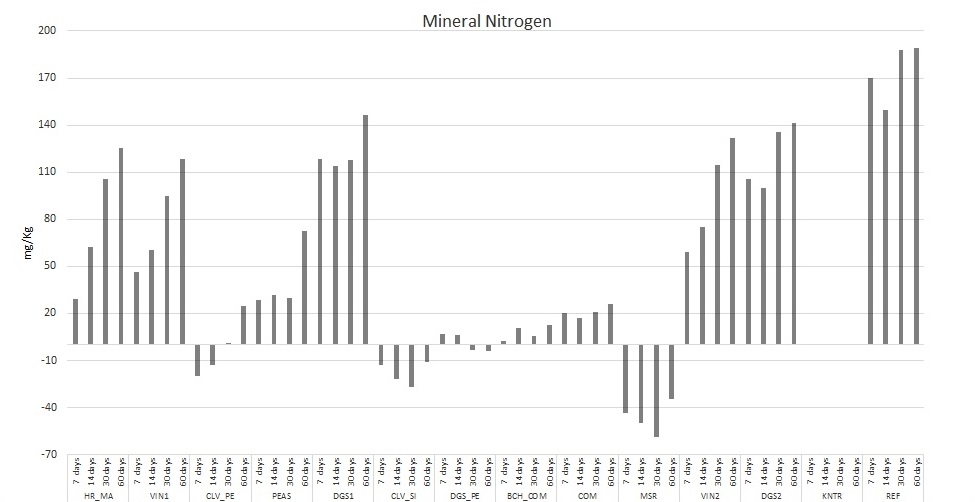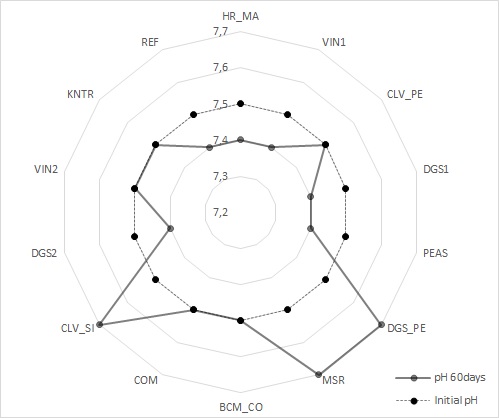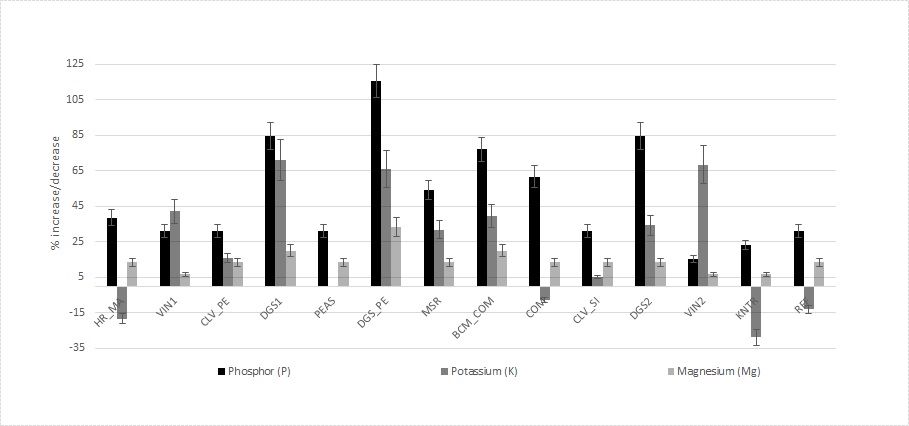Nitrogen rich waste and by-product used as organic fertilizers
One of the main postulates of the circular economy is to minimize the waste production in favor of the materials re-use. One good example of that is given by the upcycling of nitrogen rich biomasses that can be used as fertilizers.
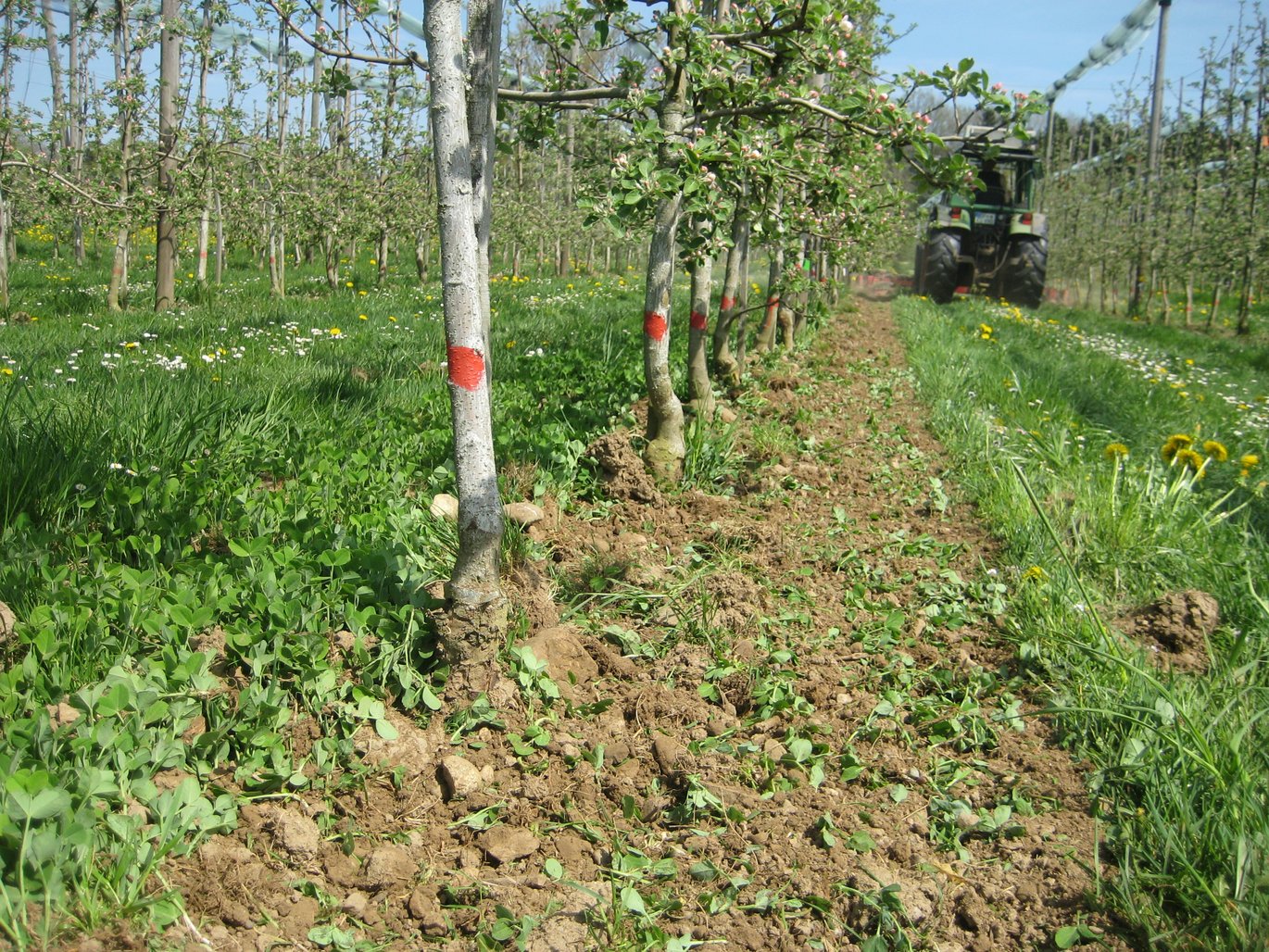
The CORE Organic project “DOMINO” aims at improving the long-term sustainability and the ecological foot print of intensive organic fruit orchards. It focuses on the interaction of fruit trees with different wild species, organic residues and microbioma. The innovation is due to the development of new intercropping strategies with different living mulches and legumes and new organic fertilizers. One of the main project activities in DOMINO is optimization of fertilisation strategies using regionally available recycling fertilisers and leguminous intercrops to improve nutrient balances and ecosystem services.
Twelve organic substances tested
DOMINO has tested 12 organic substances (Tab. 1) as nitrogen fertilizers. To understand if these products can be used in agriculture, bacteria and heavy metals content were examined, and trials to understand how much and how fast these substances are releasing mineral nitrogen into the soil were performed. Every sample was mixed with 250g of soil and incubated for two months in aerobic condition. The mineral nitrogen was periodically extracted and quantified, while at the beginning and at the end of the experiment a complete soil characterization was effectuated.
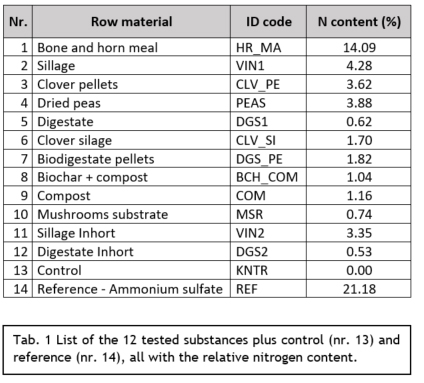
Details about the DOMINO trials Graph 1 clearly shows how digestates (DGS1, DGS2) are the fastest nitrogen releaser, and how they are releasing the larger quantity of mineral nitrogen. The two stillages (VIN1 and VIN2) are working well too, but both required more time than the digestates to reach high mineralization levels. From the solid products horn manure (HR_MA) is faster mineralized and bring constantly “new” mineral nitrogen to the soil, acting as slow releaser nitrogen fertilizer.
Tab. 1 List of the 12 tested substances plus control (nr. 13) and reference (nr. 14), all with the relative nitrogen content. Unfortunately, not all the tested products worked as expected. With clover pellets (CLV_PE), during the first month, the mineral nitrogen was immobilized and only after 30 days it becomes available, but it stayed always low (<30 mg/Kg). Digestate pellets (DIG_PE) showed minimal influence on the soil mineral nitrogen, that remains extremely stable and close to the control value. For what concern clover silage (CLV_SI) and mushrooms substrate (MSR) the results are extremely negative, as in all the four extractions performed the values were lower than in the control pots. Finally, the compost (COM) brings slowly and only low quantity of mineral nitrogen, that was even lower when compost and biochar (BCH_COM) where mixed together (8:1 v/v). To better understand what happened to the soil after the two months of incubation the main soil parameters were measured. As shown in graph 2, a few substances (CLV_SI, DIG_PE and MSR) are slightly basifying the soil, while others (DGS1, DGS2, PEAS, VIN1, HR_MA) are acidifying it, but the values remain quite close to the initial one (pH 7.5 ± 0.2). The humus content increased in all the trials, while it remains quite constant (+5%) in the control. As expected, also the organic carbon pool increased, as all the tested substances contain mainly organic matter. For what concern the macro elements (graph 3), phosphor and magnesium increased in all the trials, in particular with the application of digestate pellets (DIG_PE), the two bio-digestates (DGS1, DGS2) and the two composts (COM, BCH_COM). Only potassium, within horn manure (HR_MA), compost (COM) and control (KNTR) trials decreased to lower values if compared to the potassium level at the beginning of the experiment.
Graph 2. Soil pH measured after 60 days of incubation.
Graph 3. Percentage of increase/decrease of soil macro-nutrients measured after 60 days of incubation. |
|---|
Liquid fertilisers recommended for spring use
From this first laboratory pot trial incubations it is possible to suggest that the liquid fertilizers, thus digestates and stillages, should be used during the spring, when the trees require at most the mineral nitrogen and the environmental conditions are not favoring a rapid mineralization. Horn manure and dried peas should be used in fall when temperature and soil moisture are ideal to a fast mineralization, but the chemical structure of these two substances slow down this process and make the nitrogen available for the next spring. The other substances did not show a proper mineral nitrogen suppling to the soil, thus they should not be recommended as nitrogen fertilizer. Furthermore, as organic substances contain a lot of different elements they should be used carefully, as possible nutritive imbalances can occur.
Author(s) info
Thomas Holtz, Markus Kelderer
Laimburg Research Center
